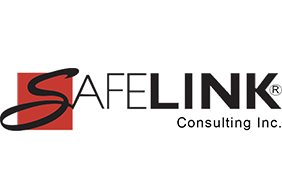Why are workplace security measures so important? Because it keeps employees, equipment, and goods secure and safe.
The Occupational Safety and Health Administration requires companies to be prepared for emergency situations and to provide a secure workplace. Doing so will ultimately keep employees, equipment and goods secure and safe. Having the right security measures can deter burglars and prevent other unauthorized persons from entering the property without permission.
Knowing that your employees understand and know what security measures your company has put in place, is essential to imposing and maintaining security of the workplace. As a part of the employee safety training, they will need to know who to go to if they have any questions or doubts about a security procedure and what the company workplace security policy is and when it changes. This way when a security procedure is carried out, it is done correctly and the member of staff can feel safe about it.
Prior to developing security procedures for its workers, a company should assess the security hazards to ensure that the appropriate security hazards are being addressed. This step is a part of contingency planning. A contingency plan is a course of action designed to help an organization respond effectively to a significant future event or situation that may or may not happen. A contingency plan is sometimes referred to as "Plan B," because it can be also used as an alternative for action if expected results fail to materialize. Contingency planning will include assessing risk, identifying different scenarios that could arise, and maintaining the contingency plan.
Develop an Emergency Action Plan - Get a free Emergency Action Plan Checklist
The Occupational Safety and Health Administration requires facilities with over 10 employees to have a written emergency action plan. In smaller facilities, the plan can be communicated orally. But whatever the size of your business, top management support and the involvement of all employees are essential in effective emergency action planning. Workers must receive training on the contents of the emergency action plan and also on their roles and responsibilities.
An Emergency Response Plan should be specific to your company and should include at a minimum:
- Means of reporting fires and other emergencies
- Evacuation procedures and emergency escape route assignments
- Procedures for employees who remain to operate critical operations before they evacuate
- Accounting for all employees after an emergency evacuation has been completed
- Assignment of rescue and medical duties for employees performing them.
Addressing workplace violence and lockdown procedures helps companies keep their workers safe and secure. In today's environment, no workplace is immune to the possibility of workplace violence. Employers have legal duty and/or a moral obligation to provide a safe workplace. To prevent loss of life and injuries and to limit financial losses and potential liability, employers should institute policies and procedures to prevent violence from occurring in their workplaces. These policies may include means to identify the potential for violence, procedures to prevent the occurrence of violence and, in the event prevention fails and an incident of violence occurs, plans to respond and mitigate further damage.
There are situations that require implementation of lockdown procedures. A lockdown of a building or group of buildings is an emergency procedure intended to secure and protect occupants who are in the proximity of an immediate threat. This procedure is used when it may be more dangerous to evacuate a building than stay inside. When determining whether a facility needs a lockdown procedure in place it is important to identify the risk factors:
- Review any past occurrences at your facility and similar facilities.
- Research neighboring facilities and their history of past occurrences.
- The closer a facility is to schools, courthouses, military bases, and prisons can increase the chance of an emergency event taking place.
- It’s always best to consult your local authorities for their recommendations.
To implement lockdown procedures, the employer should:
- Define the risks to their physical assets and workers;
- Develop safe practices covering all of the risks;
- Write the policies and communicate them to workers; and
- Document and retain the training as a part of the worker’s safety training records.
The final step is to test the procedures to ensure that workers understand what to do, that the written procedures truly address the situations at your company, and are effective to protect workers.
Get a free COVID-19 Safety Checklist
Learn more by taking our compliance training courses, Workplace Security Training - Securing your Workplace for Employee Safety
Need an employee Health and Safety Manual for your business to assist in meeting OSHA requirements? Contact SafeLink Consulting for customized safety programs specific to your industry.
Learn more about what SafeLink Consulting can do to help your business with compliance services, including safety compliance, to meet OSHA training requirements and quality system consulting to meet FDA compliance. SafeLink Consulting assists businesses with workplace safety training, infection control training, HIPAA training online, quality systems, assessments, audits, due diligence, and more.
Industries include:
Dentistry compliance - assisting the dental practice with meeting requirements for OSHA, HIPAA, EPA, and CDC guidelines, patient safety and employee health & safety
Dental Laboratory compliance - assisting the dental lab with meeting requirements for OSHA, FDA, and CDC guidelines, employee health & safety, plus FDA requirements for lab manufacturing custom implant abutment /gmp for medical device manufacturers
Medical Device Manufacturers compliance - assisting with meeting OSHA compliance & FDA requirements, GMP - good manufacturing practices
General Industry compliance - assisting with OSHA compliance and FDA compliance as it pertains to the specific business
Beverage Industry compliance - assisting beverage businesses such as the craft brewery, winery, cidery, distillery, vintner with meeting OSHA compliance, health & safety, FDA requirements / GMP - Good Manufacturing Practices
Get notification when new regulatory compliance training courses are available plus upcoming news and events by subscribing to our email news.








Leave Comment